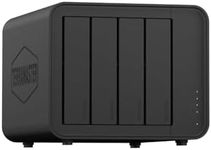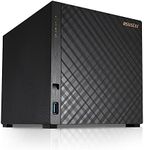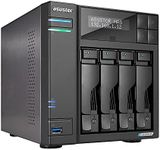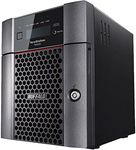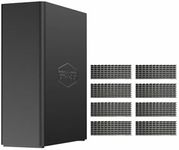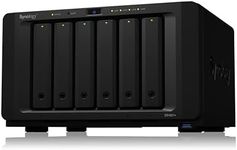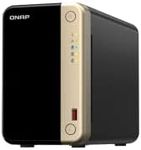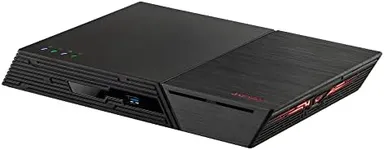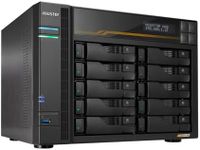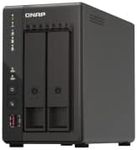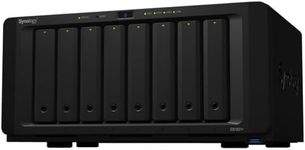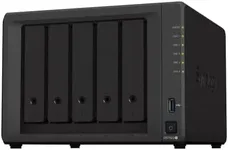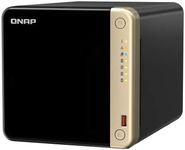Buying Guide for the Best Nas Devices
Choosing a NAS (Network Attached Storage) device can seem overwhelming, but the key is to focus on your needs: how much data you want to store, how many people will access it, and what you want to do with it (like backups, media streaming, or file sharing). Think about your current storage habits and how they might grow in the future. A good NAS should be reliable, easy to use, and flexible enough to adapt as your needs change.Drive BaysDrive bays are the slots where you install hard drives or SSDs in your NAS. The number of bays determines how much storage you can have and what kind of data protection (like RAID) you can set up. Smaller NAS devices may have 1-2 bays, which are good for simple backups or personal use. Larger models with 4 or more bays are better for families, small offices, or anyone who wants more storage and better data safety. If you expect your storage needs to grow, choosing a NAS with more bays gives you room to expand.
Processor (CPU)The processor in a NAS controls how quickly it can handle tasks like file transfers, media streaming, or running apps. Basic NAS devices have entry-level CPUs, which are fine for simple file storage and backups. More powerful CPUs are needed if you want to stream high-definition videos, run multiple apps, or support many users at once. If you plan to use your NAS for more than just storage, look for a model with a stronger processor.
RAM (Memory)RAM helps your NAS run smoothly, especially when handling multiple tasks or users. Entry-level NAS devices may have 512MB to 2GB of RAM, which is enough for basic file sharing. For media streaming, running apps, or supporting several users, 4GB or more is better. If you want to use advanced features or expect your needs to grow, choose a NAS with more RAM or one that lets you upgrade the memory later.
Network ConnectivityNetwork connectivity refers to how your NAS connects to your home or office network. Most NAS devices have at least one Gigabit Ethernet port, which is suitable for most users. Some models offer multiple Ethernet ports or even faster 2.5GbE or 10GbE connections, which are useful if you need very fast file transfers or have many users accessing the NAS at once. If you work with large files or want the fastest speeds, look for advanced network options.
Supported RAID LevelsRAID is a way to organize multiple drives for better performance or data protection. Different NAS devices support different RAID levels, like RAID 0 (speed), RAID 1 (mirroring for safety), or RAID 5/6 (a balance of both). If you want to protect your data from drive failures, make sure your NAS supports RAID levels that match your needs. For simple use, RAID 1 is often enough, but for larger setups, RAID 5 or 6 offers more flexibility and safety.
Operating System and AppsThe operating system (OS) of a NAS controls how you interact with it and what features you can use. Some NAS OS are very user-friendly and offer lots of apps for things like media streaming, backups, or cloud syncing. Others are more basic. If you want to do more than just store files, check that the NAS OS supports the features and apps you care about, and that it’s easy for you to use.
Remote Access and SecurityRemote access lets you reach your files from anywhere, not just at home. Good NAS devices make this easy and secure, with features like encrypted connections and user permissions. If you want to access your data on the go or share files with others, make sure the NAS offers strong security and simple remote access options.
Expandability and UpgradesExpandability means how easily you can add more storage, memory, or features to your NAS in the future. Some NAS devices let you add more drives, upgrade RAM, or connect expansion units. If you think your needs might grow, look for a NAS that supports upgrades, so you don’t have to replace the whole device later.
